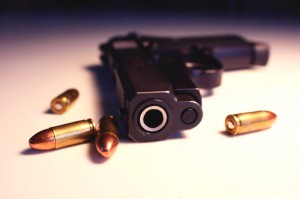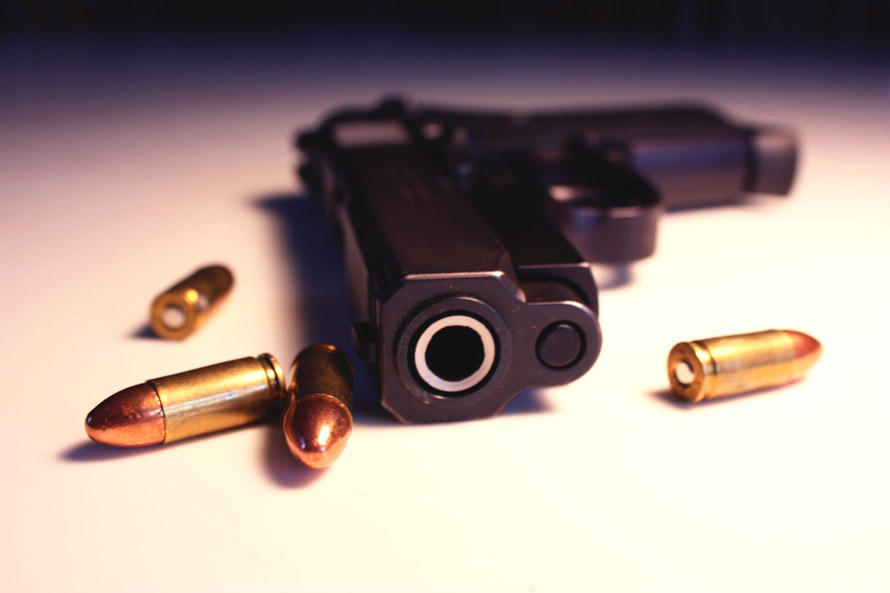 By Eric Ferkenhoff and Maryam Jameel
By Eric Ferkenhoff and Maryam Jameel
Tallying Chicago’s violence during the first half of 2012, including a 39 percent jump in murders, it can be difficult to get what criminologist Tracy Siska is talking about.
True, the streets are bloodied by gang warfare, said Siska, head of the Chicago Justice Project, an independent, non-profit research group that analyzes criminal justice data. The numbers don’t lie; there had been 260-plus murders through the end of June, up 72 over the same period last year. And overnight Tuesday, two girls 12, and 13, became the latest child victims of the gunfire here. Neither were thought to be intended targets, but rather were victims of errant gunfire just days after the release of a University of California Davis study showing the prevalence of stray-bullet victims.
But Siska has argued much of the media is playing the hype game, skewing reality for Chicagoans or observers by screaming with headlines about more city children getting murdered this public school year than any year since 2008 – the first full year of the recession – and countless stories of overnight mayhem suffered in many Chicago neighborhoods.
There has been a parade of stories – ones Siska would agree should and must be told. But lost is perspective, he said. There’s a breathless quality to the pieces, Siska argued, and the city has gotten panicky with headlines like this in the Chicago Tribune on June 29: “Girl slain selling candy is latest victim of Chicago’s homicide surge” – or this banner from the Sun-Times on July 8: “Chicago Under Fire: This is Genocide.”
His point is not to cut slack to city officials, who are getting an earful from key aldermen, other lawmakers, community groups, residents and the media. This is their city; they chose the spotlight and need to deal with the glare.
Mayor Rahm Emanuel acknowledged as much in a recent interview with CBS: “I can’t create an island… So the decisions in Washington do matter. But where I used to as a mayor rely on Washington, I’m going to try to come up with different strategies to do a break out, because I’m not going to get stuck in their disfunctionality, and I’m not going to get caught in the fact that the state, they have their own budget issues.”
For police Supt. Garry McCarthy’s part, he told reporters this week that while crime is certainly down – and by a lot – since the peak in 1994, when there were nearly 950 murders, he is not satisfied by his own watch. Crime is sliding, he said, and progress is being made. But McCarthy said he wouldn’t call it success at this point.
Siska wants the stories to include context – such as putting some of the blame for an overall jump in homicides from year to year on the warm winter months that stretched the average killing season. Still, he acknowledges it’s difficult to ignore comparisons that put Chicago’s crime – a calculation that factors high poverty, low educational attainment, sharp class divides and stubborn segregation – in a harsh light. Take, for example, Houston, he said. It has a similar number of residents spread over a larger area with a much lower crime and murder rate and less than half the number of officers policing the city.
As well, Siska and some police on the street worry the public relations throttling of Mayor Emanuel and police Supt. McCarthy is forcing officials, locally and on national television, to make big promises and be far too reactionary in planning a combat strategy. Among other things, the city plans to invest $4 million to shore up deteriorating businesses and buildings that attract squatters, dealers and violence; a $1 million grant to the controversial CeaseFire group made famous in the documentary “The Interrupters;” and the training of about 500 new officers.
Gone are the days of quick-hit strike forces that swarmed gang and violence hotspots and became such a signature of Chicago policing under previous superintendents. In their place are more patrols – a slower, get-to-know-you strategy that, according to some officers and experts, could pay dividends down the line by familiarizing residents and cops that police them but lacks the fast fix that seems so needed now.
“I have no evidence we are under or short on cops,” says Siska, who said the number of sworn Chicago cops is actually lower than the 13,500 on the books. “If we are, someone is going to have to prove to me that there was some study that detailed the exact number of officers Chicago is supposed to have based on calculations dealing with crime, population shifts, calls for service, etc.”
The reasoning recalls a speech by McCarthy soon after NATO held its summit here in late May – when flare-ups between protestors and police got widespread attention, and just as the violence seemed to be boiling. Standing before a crowd of moneyed and influential guests at the Chicago Club, McCarthy said Chicago was facing a “perception problem,” that focused too much on the negative without giving good results – such as drops in most major crime categories – their due.
Siska would get some agreement from Arthur Lurigio, a professor of psychology and criminal justice at Loyola University Chicago. Both echo a study by the Justice Policy Institute that found more police does not equal less crime – and in fact, could swell court costs as minor offenses arrested to blunt the major crime clog an already full court system.
“There’s not a powerful point-by-point linear relationship between number of police officers and crime rate,” Lurigio said. “It’s more complicated than that… You can expect that if you add more and more police, streets will get safer and safer and safer. And there’s also trade-offs. I’m not saying this about Chicago because I think Chicago’s been under-staffed, but if you add enough police officers to the force, then you start encroaching upon people’s liberties, police presences could be regarded as intrusive, unfriendly, creating a view of the public that they’re being scrutinized unnecessarily and excessively by the police.”
The bigger issue, according to Siska, Lurigio and some police supervisors, as well as cops on the beat, is deployment – an issue that is touched on but not factoring large into the debate or frenzy over the spike in killings.
“Its not only how many police officers you add to the force,” Lurigio said, “but where you assign them and what you assign them to do that really makes a difference. So adding new police officers I think is a good idea, but where you assign them, and the kinds of activities that they engage in, is equally as important as the actual numbers.”
One supervisor said many of the moves by the Mayor’s office and police brass is PR that will come back to haunt the city going forward. McCarthy’s training of up to 500 new officers, for example, won’t show a real impact for another year – long after this season of violence has passed – since it usually takes six months to complete the academy, and officers are then assigned for 12 weeks to field training officers to get a feel for the beat.
“You have some people [at the training academy] with very minimal time on the job and streets teaching new recruits,” he said. “Instructors should be rotated in an out of the academy to keep their skills updated. Sending them out for a week here and there for Operation Protect Youth doesn’t cut it.”
Adding to the problem, this supervisor said, is that police are defeating their own argument against specialized quick-strike units by how the new officers are used.
“They started doing it, just too late,” he said of the hiring. “Manpower is the key issue. Even when they try to argue that the additional resources deployed to [the South Side and West Side] are causing a decrease in homicides, they are reinforcing the argument that saturating areas with officers has an impact on crime. Same holds true for their overtime initiative: They are sending them en masse to help control specific areas, clearly showing that it is not about strategies or computer simulations, but boots on the ground.”
But while that philosophy gets credence with Siska and Lurigio on some fronts, it doesn’t convince them on all points. Take homicides, which are causing such frenzy here, according to Lurigio: “People don’t understand, in general, that a homicide is one of the least preventable crimes,” he said. “And they’re the most important metric on which we evaluate the police overall in their performance. But homicides are now unpreventable. It’s easier to prevent burglaries and car theft and vandalism.”
But he counters his own point by noting that some 60 percent of murders in this city are thought to be gang-related, “in which a motive is known. It’s very important that the police concentrate on those, because there’s some chance that they can prevent gang-related homicides.”
Eric Ferkenhoff is the editor of The Chicago Bureau.
Maryam Jameel is a writor for The Chicago Bureau.
Photo by The Chicago Bureau’s Natalie Krebs
